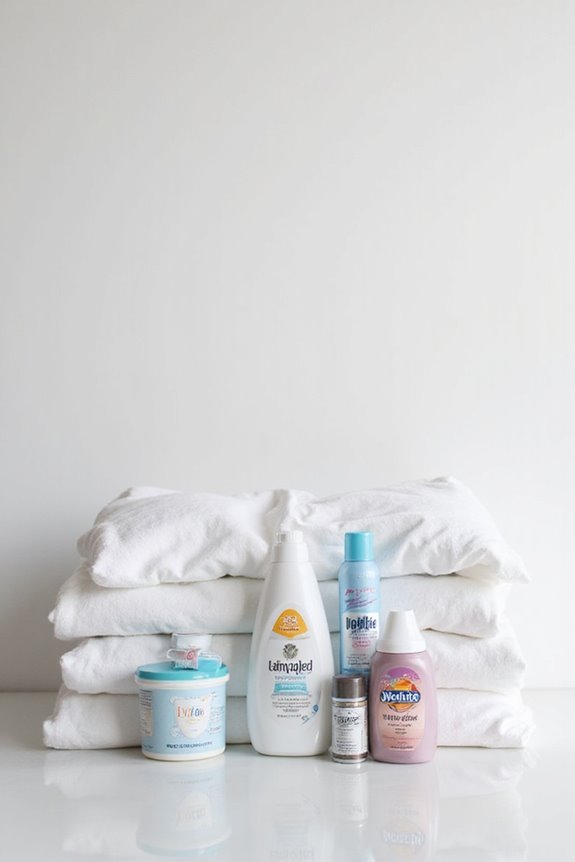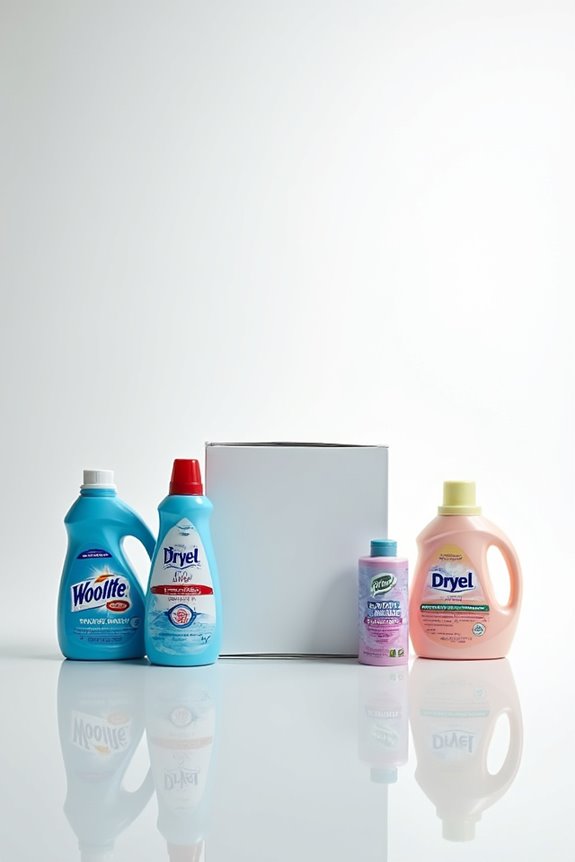When we tackle laundry, we should sort clothes by colors—lights, darks, and brights—while checking care labels. It’s key to choose the right wash cycle, like normal for everyday wear and gentle for delicates. Water temperature matters too; warm works for most items, while cold is great for saving energy. Don’t forget to measure detergent correctly! If we stick to these steps, our clothes will thank us. Stick around, and we’ll share more handy tips!
Key Takeaways
- Categorize laundry by color and fabric type to prevent damage and ensure effective cleaning.
- Select the appropriate wash cycle based on fabric compatibility and soil level for optimal results.
- Use the correct water temperature to preserve fabric integrity and enhance cleaning efficiency.
- Measure detergent accurately according to load size to avoid residue buildup and maximize effectiveness.
- Avoid overloading the washing machine to ensure balanced loads and peak performance during washing.
Sorting and Preparation of Laundry
When we tackle laundry day, sorting and preparing our clothes is essential to avoid mishaps. First, let’s categorize our laundry by color groups: lights, darks, and brights. This helps prevent dye transfer, especially with new clothes. We should also keep whites separate for safe bleaching. Next, we’ll check fabric care labels to sort delicate items from heavier ones. Using mesh bags for fragile garments can save our favorite pieces from snagging. It’s also smart to pre-treat stains and empty pockets—who wants a surprise pen explosion, right? By dedicating specific baskets for each category, our laundry organization becomes a breeze. Additionally, selecting hypoallergenic and pH-neutral detergents is crucial for protecting delicate fabrics during the wash cycle. With this simple prep, we’re on our way to cleaner, longer-lasting clothes!
Choosing the Right Wash Cycle
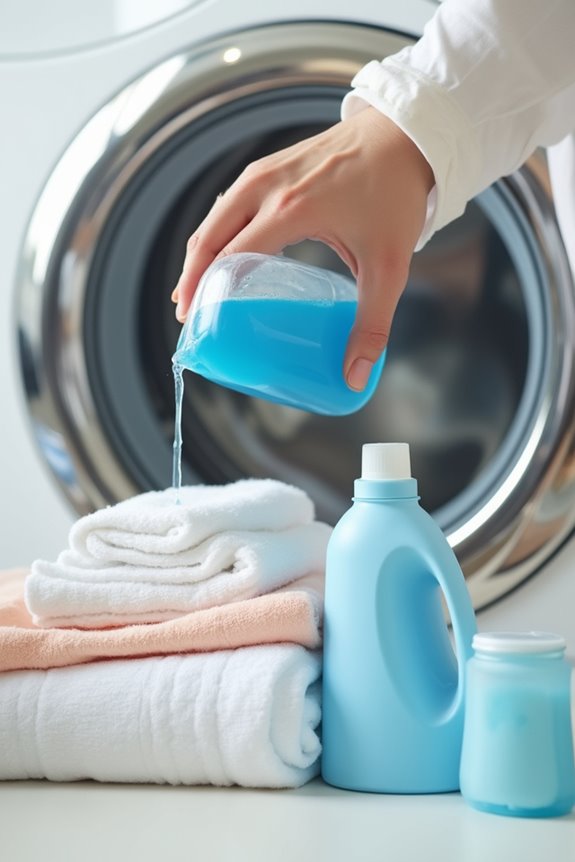
How do we choose the right wash cycle for our laundry? First, we need to contemplate fabric compatibility. We wouldn’t want to toss our favorite silk blouse into a heavy-duty cycle, right? For everyday clothes, the normal cycle works well, while delicate fabrics need the gentle cycle to avoid damage. If we’re dealing with heavily soiled work clothes, the heavy-duty cycle is our go-to. Additionally, using hypoallergenic formulations can help prevent skin irritations, especially for sensitive skin.
Understanding Water Temperature Settings
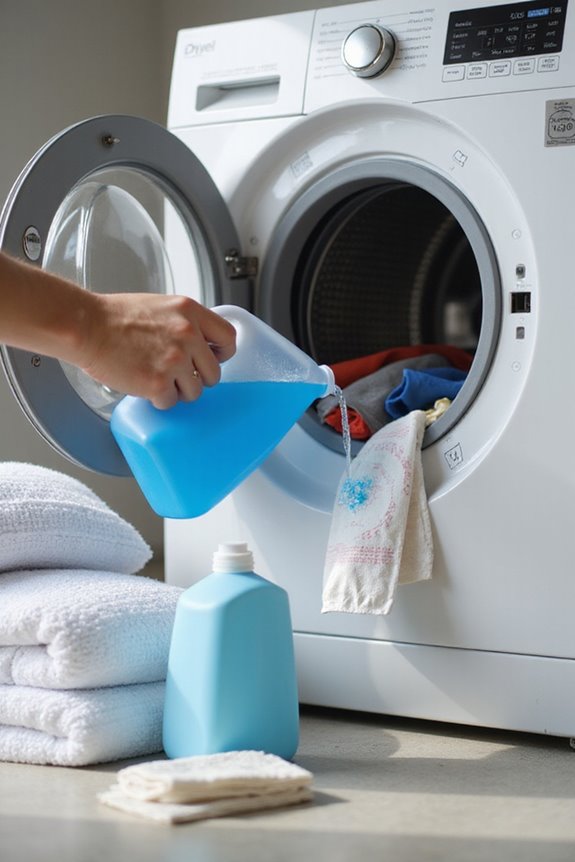
Understanding the right water temperature for our laundry can make a big difference in both cleaning effectiveness and fabric care, so let’s explore it. Hot water, around 130°F to 140°F, is great for heavy soil but can shrink or fade some fabrics—so use it wisely. Warm water, about 90°F to 120°F, works well for most everyday clothes, keeping our jeans looking sharp. Cool and cold water, typically below 90°F, are perfect for delicate fabrics and colors that bleed. It’s essential to check fabric types and care labels. Remember, washing in cold water saves energy and extends our clothes’ lifespans. Additionally, using the right detergent for hard water conditions can further enhance cleaning effectiveness and fabric care. So, let’s be smart about our water temperature choices to keep our laundry fresh and vibrant!
Proper Use of Detergent and Additives
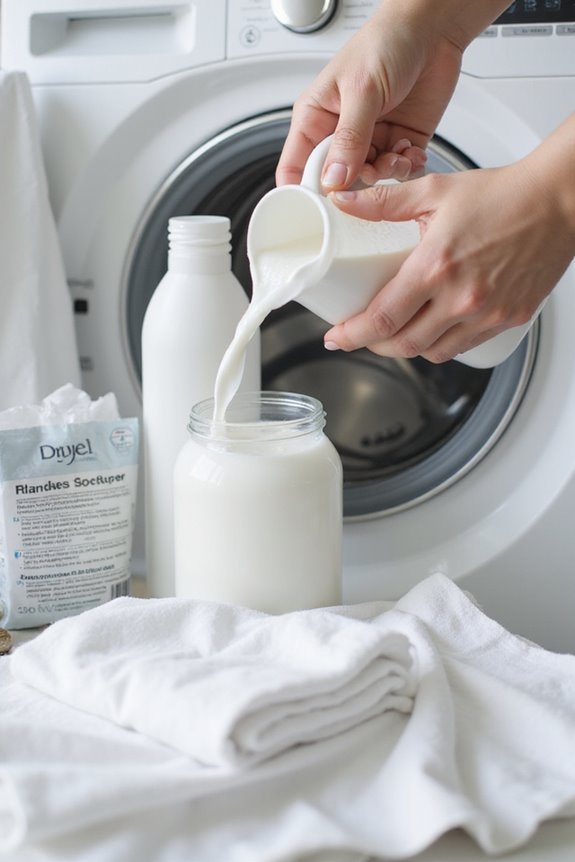
After we’ve figured out the right water temperature for our laundry, it’s time to focus on what really makes our clothes clean: detergent and additives. Let’s start with detergent types. Liquid, powder, pods, or sheets—each has its own guidelines. We need to measure carefully, adjusting based on load size and soil level. For example, larger loads need more detergent, while HE washers require less to avoid residue. Many concentrated detergents maximize efficiency and value for an effective clean with fewer loads.
Now, onto additive usage. Fabric softeners can be great, but we should use them sparingly to prevent buildup. And don’t forget pre-treating stains! We’ve all been there—spilling something and wishing we’d acted sooner. So, let’s follow the instructions closely to keep our clothes looking fresh and clean!
Effective Load Management Techniques

When we tackle laundry, managing our loads effectively can make a world of difference in how clean our clothes come out. First, we need to be aware of our washing machine’s load capacity. Overloading can damage the machine and leave clothes dirty. Filling the drum to about three-quarters full is a good rule of thumb. Let’s also sort our laundry by fabric type and soil level; this helps guarantee even washing and protects delicate items. For bulky items, using the right cycle is key. We should wash them separately to avoid unbalanced loads. Finally, let’s remember that balanced loads lead to peak performance, reducing wear on our machines and keeping our laundry fresh and clean!
Timing Your Washes for Best Results
Timing our washes can really make a difference in how clean our clothes get, not to mention how much energy we save. For everyday items like cotton and linens, a normal cycle of about 50 to 60 minutes is perfect. If we’re in a hurry, quick wash cycles ranging from 15 to 40 minutes can handle lightly soiled loads. We should reserve heavy-duty cycles for those tough stains on work clothes or denim. It’s all about matching our wash timing to the fabric type and soil level for better cycle efficiency. Additionally, using high-efficiency (HE) detergents is essential for front-loading washers to prevent detergent buildup and ensure optimal cleaning results. So, let’s plan our laundry around off-peak hours to save on energy costs. After all, clean clothes shouldn’t come at a hefty price!
Dryer Settings and Post-Wash Care
We’ve talked about how to time our washes for the best clean, but the drying process is just as important. Choosing the right dryer settings is key to fabric care. For heavy items like towels, we should use high heat, while medium heat works for everyday clothes. Delicate fabrics? Low heat or air fluff is our best bet.
Let’s not forget about dryer maintenance! Regularly cleaning lint filters helps everything dry more efficiently. After drying, we should promptly remove clothes to minimize wrinkles. If we air-dry heat-sensitive items, it protects their fibers and shape. Additionally, using a clothes drying rack can be an effective way to air dry items without risking damage from high heat. By following these guidelines, we can guarantee our clothes last longer and look great—who doesn’t want that?
Preventing Stains and Odors
Stains and odors can turn our favorite clothes into laundry nightmares. To kick off our stain prevention efforts, let’s use the right detergent—like HE detergent for high-efficiency washers. It’s important to measure carefully; too much can redeposit on our clothes. Adding 1-2 tablespoons directly into the tub helps with full dissolution, reducing stains.
Now, about odors: we should rinse thoroughly. Selecting wash cycles with extra rinse options or running additional rinse cycles guarantees we eliminate any lingering scents. If we’re dealing with hard water, using water softeners can also help. And let’s not forget, promptly removing wet clothes prevents mildew. With these simple practices, we can keep our laundry fresh and fabulous!
Maintaining Your Washer and Dryer
Keeping our clothes looking great is just half the battle; we also need to take care of the machines that do the hard work. For effective washer maintenance, let’s run a cleaning cycle every 30 days. Don’t forget to clean the detergent dispenser and wipe down those door seals to prevent mold. Leaving the washer door open helps with air drying.
As for dryer upkeep, we should clean the lint trap after every use and deep clean it every six months. Let’s also check the vents every couple of years to avoid any fire hazards. Regular inspections and a monthly maintenance schedule will keep our appliances running smoothly. Trust me, a little care goes a long way!
Frequently Asked Questions
Can I Wash All Fabrics Together?
We can’t wash all fabrics together. Different fabric types need special care, and color compatibility is essential. Mixing them can lead to damage or staining, so let’s sort them out before we wash.
What Happens if I Overload the Washing Machine?
If we overload the washing machine, we risk reduced machine efficiency, leaving clothes unclean and musty. Plus, overloading can cause mechanical issues and shorten the machine’s lifespan, leading to more repairs and higher costs.
How Often Should I Clean My Washing Machine?
After washing a week’s worth of muddy soccer uniforms, we realized our machine needed attention. We should clean our washing machine monthly to maintain peak performance and hygiene, ensuring proper cleaning frequency for effective machine maintenance.
Are Fabric Softeners Necessary for All Types of Laundry?
Are fabric softeners necessary for all types of laundry? We think it depends. While they offer benefits like softness and fragrance, laundry alternatives like vinegar can work well too, especially for sensitive fabrics and specific needs.
How Can I Prevent Clothes From Fading in the Wash?
Oh sure, let’s just toss our clothes in and hope for the best! If we actually want to prevent fading, we should embrace color protection and use smart washing techniques like cold water and gentle cycles.



